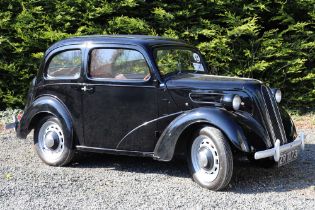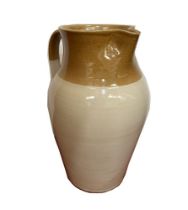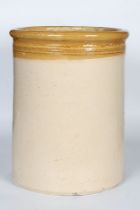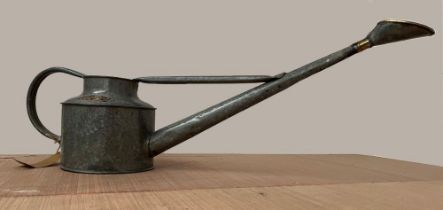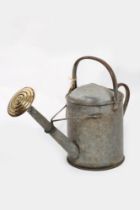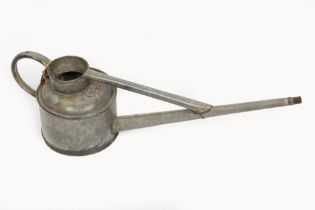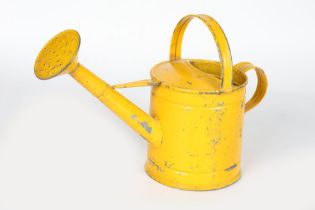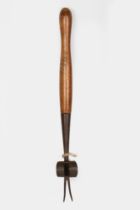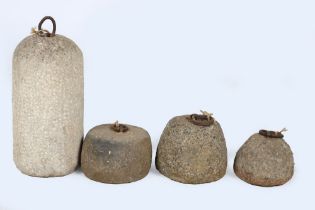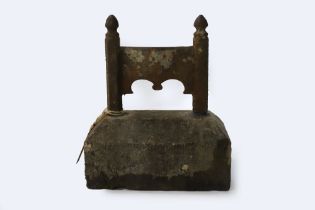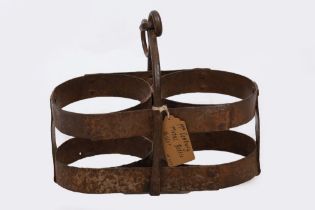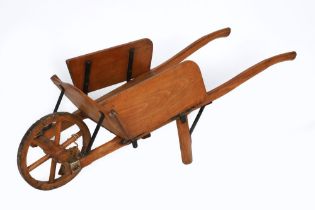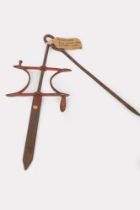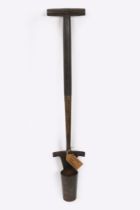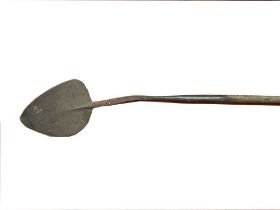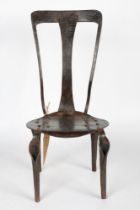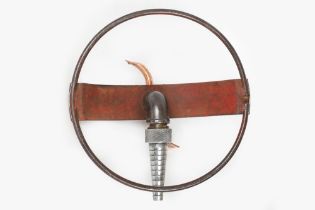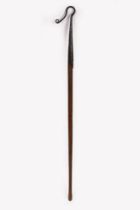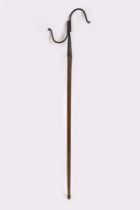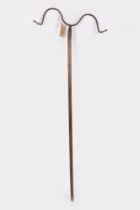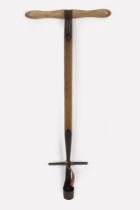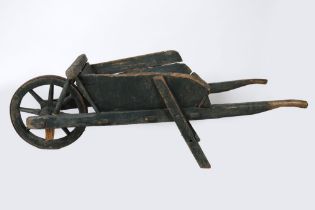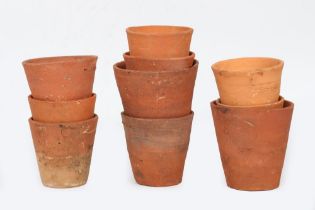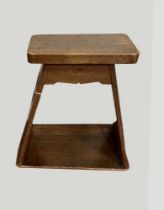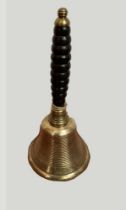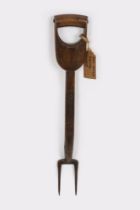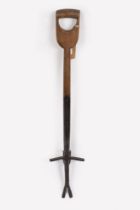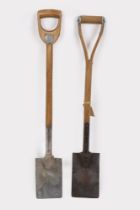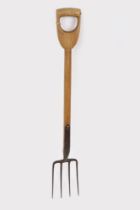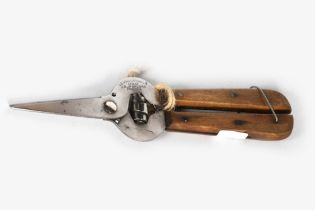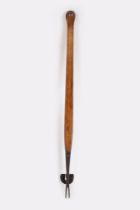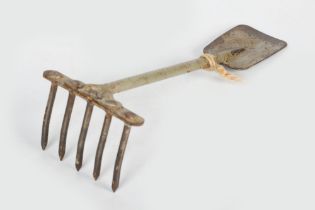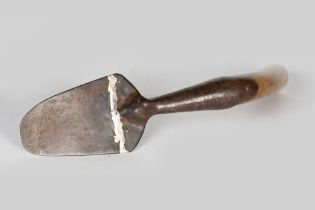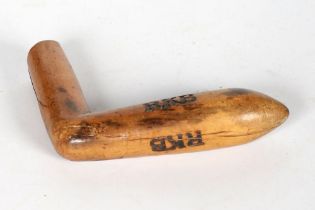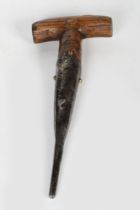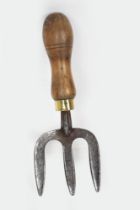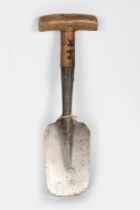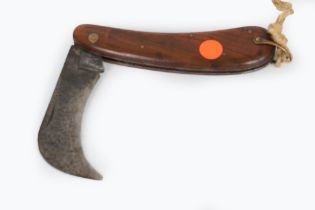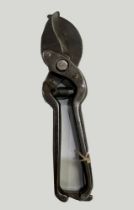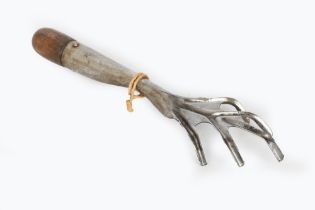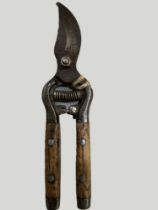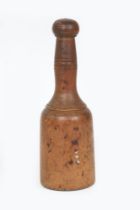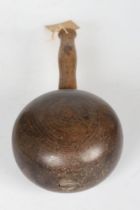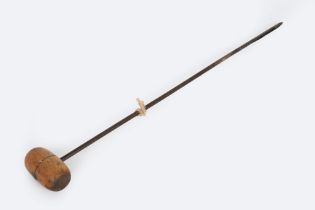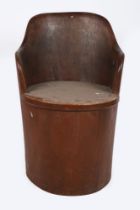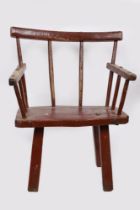Refine your search
Estimate
Category
- Furniture (151)
- Kitchenalia (122)
- Salvage & Architectural Antiques (69)
- Tools (62)
- Ceramics (42)
- Collectables (36)
- Lighting (28)
- Metalware (26)
- Porcelain (21)
- Toys, Models & Dolls (21)
- Classic Cars, Motorcycles & Automobilia (18)
- Glassware (14)
- Taxidermy & Natural History (13)
- Sporting Memorabilia & Equipment (11)
- Prints & Multiples (8)
- Scientific Instruments (8)
- Arms, Armour & Militaria (7)
- Books, Manuscripts & Periodicals (7)
- Musical Instruments & Memorabilia (7)
- Silver & Silver-plated items (5)
- Sculpture (4)
- Vintage Fashion (4)
- Carpets & Rugs (3)
- Bank notes (2)
- Chinese Works of Art (2)
- Entertainment Memorabilia (2)
- Jewellery (2)
- Stamps (2)
- Textiles (2)
- Wines & Spirits (2)
- Clocks (1)
- Indian Works of Art (1)
- Islamic Works of Art (1)
- Japanese Works of Art (1)
- Oil, Acrylic paintings & Mixed Media (1)
- Railwayana (1)
- Watercolours (1)
- Writing Instruments (1)
Creator / Brand
Item Type
- Seating (48)
- Bowl (35)
- Chair (33)
- Seat (31)
- Cabinets & Case Pieces (25)
- Table (23)
- Tableware (23)
- Lamp (20)
- Mug (19)
- Spongeware (13)
- Jug (12)
- Utensils & Kitchen Tools (12)
- Bench (11)
- Shelves (11)
- Ceramic Mug (9)
- Chest (9)
- Cupboard (9)
- Rack (9)
- Taxidermy (9)
- Cabinet (8)
- Dresser (8)
- Ceramic Bowl (7)
- Frying pan (7)
- Plough (7)
- Stool (7)
- Trough (7)
- Bed (6)
- Box (6)
- Butter Churn (6)
- Platter (6)
- Settle (6)
- Candlestick (5)
- Ceramic Jug (5)
- Drill (5)
- Light (5)
- Panel (5)
- Saddle Rack (5)
- Scale (5)
- Trunk (5)
- Utensil (5)
- Balustrade (4)
- Ceramic Platter (4)
- Chest of Drawers (4)
- Chisel (4)
- Figure (4)
- Fireplace (4)
- Grain Measure (4)
- Metal Watering Can (4)
- Model (4)
- Pestle and Mortar (4)
- Plate (4)
- Porcelain (4)
- Radio (4)
- Shovel (4)
- Spade (4)
- Watering Can (4)
- Advertising (3)
- Advertising Sign (3)
- Armchair (3)
- Car (3)
- Clamp (3)
- Coffer (3)
- Desk (3)
- Dish (3)
- Mortar And Pestle (3)
- Pipe (3)
- Pitcher (3)
- Planter (3)
- Poster (3)
- Press (3)
- Scythe (3)
- Spinning Wheel (3)
- Toolbox (3)
- Toolboxes & Tool Chests (3)
- Tub (3)
- Weighing (3)
- Audio Equipment (2)
- Auger (2)
- Banknote (2)
- Bellow (2)
- Bicycle (2)
- Bottle (2)
- Candelabra (2)
- Ceramic Plate (2)
- Dining Chair (2)
- Enamel Sign (2)
- Engraving (2)
- Gate (2)
- Kitchen Chair (2)
- Mallet (2)
- Mirror (2)
- Musical Instrument (2)
- Noggin (2)
- Pewter (2)
- Plaque (2)
- Rushlight holder (2)
- Scraper (2)
- Sculpture (2)
- Shelf (2)
- Sledge (2)
- Spirit level (2)
- Staffordshire (2)
- Surround (2)
- Table Lamp (2)
- Tray (2)
- Washstand (2)
- Weighing scales (2)
- Whisky (2)
- 19th-21st Century Art (1)
- Anvil (1)
- Automobilia, Parts & Accessories (1)
- Bandsaw (1)
- Basket (1)
- Beads (1)
- Bedstead (1)
- Bell (1)
- Benches (1)
- Blow Lamp (1)
- Blunt (1)
- Blunt Weapons (1)
- Brace (1)
- Bread Bin (1)
- Butter Dish (1)
- Ceramic Ornament (1)
- Chess (1)
- Chimney (1)
- Chinese Bowl (1)
- Clock (1)
- Coat (1)
- Coffee table (1)
- Coffee machine (1)
- Compact (1)
- Cot (1)
- Creamer (1)
- Cutlery (1)
- Dibber (1)
- Dispenser (1)
- Display Cabinet (1)
- Display Case (1)
- Doll (1)
- Door (1)
- Dressing Table (1)
- Fishing (1)
- Game (1)
- Glass Bottle (1)
- Glass Bowl (1)
- Glass Tumbler (1)
- Gramophone (1)
- Grinder (1)
- Hand Pump (1)
- Handlebars (1)
- Horn (1)
- Jar (1)
- Jelly Mould (1)
- Knives and Blades (1)
- Ladder (1)
- Ladle (1)
- Ledger (1)
- Limestone Sculpture (1)
- Lithograph (1)
- Longcase clock (1)
- Mantelpiece (1)
- Mattock (1)
- Metal Mug (1)
- Metal Plate (1)
- Milk churn (1)
- Music memorabilia (1)
- Necklace (1)
- Necklaces, Pendants & Medallions (1)
- Oil Can (1)
- Oil painting (1)
- Oil on Canvas (1)
- Oleograph (1)
- Ornament (1)
- Overcoat (1)
- Plant Stand (1)
- Portrait (1)
- Pruning Shears (1)
- Pump (1)
- Riding Boots (1)
- Rocking Chair (1)
- Rocking Horse (1)
- Roller (1)
- Saddle (1)
- Salt (1)
- Screwdriver (1)
- Sharpening Stone (1)
- Side Table (1)
- Sidecar (1)
- Sport (1)
- Standard Lamp (1)
- Steam engine (1)
- Stick (1)
- Stopper (1)
- Sword (1)
- Tandem (1)
- Tankard (1)
- Telephone (1)
- Tobacco Jar (1)
- Towel Rail (1)
- Tricycle (1)
- Tricycle Toy (1)
- Trowel (1)
- Trug (1)
- Truncheon (1)
- Tub Chair (1)
- Tumbler (1)
- Vintage Advertising (1)
- Vitrine (1)
- Walking Stick (1)
- Wall Light (1)
- Wardrobe (1)
- Water Jug (1)
- Whip (1)
- List
- Grid
a green crop hay loader, circa 1950, produced by the International Harvester Company under the McCormick brand.
Museum condition, an early agricultural implement manufactured by P. Pierce & Co. of Wexford, illustrating the firm's prominent role in Irish farm...
Registration: ZR 1073 Extensively restored to a very high standard. A familiar sight on Irish roads in the 1940s and ’50s, this 1949 Ford Anglia E...
a robust 3-gallon capacity jug, typical of Victorian-era stoneware used in agricultural and domestic settings. 44 cm. high; 10.5 cm. wide; 20 cm. ...
a substantial Victorian jar with a glazed finish, originally used for food storage or preservation. 38 cm. high; 30 cm. wide
a ¾ gallon capacity watering can in galvanised metal, dating from the early 20th century.
a traditional galvanised watering can from the early 1900s, typical of rural garden use.
a 2-quart vintage watering can in galvanised metal, representative of early 20th-century garden tools.
painted yellow, this small watering can was designed for a child, reflecting mid-20th-century domestic gardening practices.
a well-preserved daisy grubber featuring a turned beechwood handle, typical of early 20th-century garden tools.
a group of four hand-hewn Victorian stones, traditionally used for securing livestock in open pastures.
a cast iron boot scraper mounted on a stone base, characteristic of 19th-century domestic entryways.
an elegant brass garden sprinkler, typical of decorative yet functional Victorian horticultural equipment. 38 cm. high; 30 cm. wide; 18 cm. deep
a seldom-seen glazed pottery vessel designed to provide water for chickens, reflecting 19th-century smallholding practices.
a utilitarian metal cooler used for lowering bottles into wells to keep liquids chilled before the advent of refrigeration.
a charming Edwardian-era child’s wheelbarrow crafted from beechwood, often used for play or assisting in garden tasks.
a two-piece iron garden line from the Victorian period, used for aligning rows in kitchen gardens.
EDWARDIAN BULB PLANTER
featuring a painted handle marked ‘SLG,’ this planter dates to the Edwardian period and was used for bulb planting in formal gardens.
VINTAGE TURF CUTTER
a traditional hand-held turf cutter used for harvesting peat, a vital resource in rural Irish households.
VINTAGE METAL CHILD'S CHAIR
a small, metal-framed chair designed for a child, evocative of mid-century domestic furnishings.
constructed from red-painted iron with copper and brass fittings, a striking and unusual design.
a brightly coloured Dronwal sprinkler from the 1950s, known for its efficient distribution and cheerful design.
VICTORIAN SHEPHERD'S CROOK
a long-handled crook used for managing sheep, typical of the tools used by 19th-century shepherds.
VICTORIAN DIPPING CROOK
a traditional iron crook used by shepherds for administering sheep dips, dating from the Victorian era.
a rare double-ended dipping crook, employed for managing and treating livestock, particularly during the 19th century.
a substantial hand-held cutter, likely used for both baking and herbal preparation, indicative of multi-use domestic tools of the period.
a fine example of a Victorian-era bulb planter manufactured by Barr, a respected name in horticultural tools.
crafted from solid hardwood, this practical device was used to remove boots without bending, a common utility in 19th-century rural homes.
EDWARDIAN WOODEN WHEELBARROW
a robust wooden wheelbarrow from the Edwardian period, likely used in both agricultural and garden settings. 168.5 cm. long; 64 cm. wide
a collection of 106 handmade terracotta plant pots, each uniquely shaped, offering insight into Victorian-era horticultural practices.
SMALL OAK TRUG AND TROWEL
a charming small trug crafted from oak, accompanied by a vintage trowel—ideal for light garden use or decorative display.
SMALL DARK WOOD LOW STOOL
a rustic, low-profile stool in dark wood, possibly hand-crafted, suited to domestic or dairy use.
VICTORIAN BRASS HAND BELL
a classic Victorian hand bell with a turned wooden handle, traditionally used in schools or for domestic service.
a utilitarian wooden rack fitted with iron hooks, designed for organising and storing gardening tools. 8 cm. high; 95 cm. wide; 2 cm. deep
VINTAGE ROGUEING FORK
a specialist agricultural implement used for rogueing—removing inferior or unwanted plants from crops.
a well-preserved dock lifter made by Brades, an established English manufacturer of agricultural tools. 101 cm. high; 18 cm. wide
TWO VINTAGE SPADES
a pair of vintage spades, each with a worn wooden handle, displaying signs of long-term use in rural settings.
VINTAGE DIGGING FORK
a traditional four-pronged digging fork featuring a weathered wooden shaft, suited to general garden work.
3 LARGE WOODEN TRUGS
a set of three sizeable wooden garden trugs, each fitted with a central carrying handle, used for collecting produce or tools.
FLORIST'S NIPPERS
a pair of compact cutting nippers with wooden handles, likely used for floral arrangements or pruning.
VINTAGE DAISY GRUBBER
a simple yet effective vintage garden tool designed specifically for extracting daisy roots and similar weeds.
VINTAGE COMBI TOOL
a multi-purpose hand tool combining several garden functions, reflecting the ingenuity of mid-20th-century design.
a specialised small spade with a narrow blade, designed for delicate tasks such as planting or harvesting strawberries.
VINTAGE BOXWOOD DIBBER
a finely turned dibber in boxwood, used for sowing seeds or setting bulbs, and prized for its durability and patina.
VINTAGE DIBBER
a traditional wooden dibber, likely hand-carved, used in sowing and transplanting.
SMALL VINTAGE HAND FORK
a compact hand fork with a wooden grip, used for cultivating soil or weeding flower beds.
VINTAGE ONION HOE
a specialist hoe with a narrow blade, designed for precision weeding around onion rows.
SMALL VINTAGE HAMMER
a petite hammer, likely for light domestic or garden use, exhibiting signs of regular use.
SKELTON STRAWBERRY SPADE
a well-crafted strawberry spade with ash wood handle, manufactured by Skelton, designed for delicate planting and harvesting work.
VINTAGE PRUNING KNIEF
a traditional folding pruning knife, likely used in orchard or vineyard settings, with signs of practical wear.
PAIR OF VINTAGE SECATEURS
a well-used pair of iron secateurs, ideal for pruning and garden maintenance, typical of mid-century designs.
VINTAGE WEEDER
a simple, utilitarian garden tool, designed for uprooting weeds with precision.
PAIR OF VINTAGE SECATEURS
classic hand-held pruning shears, retaining their original patina.
finely crafted set squares, featuring brass fittings and adjustable joints, used in joinery and fine carpentry.
of bell-shaped form, this mallet is an elegant and practical tool, showcasing skilled 18th-century woodturning. 19 cm. high; 6 cm. wide
a dense and heavy-duty mallet of circular form, turned from lignum vitae, prized for its durability.
a long-shafted auger-style drill bit with a turned wooden handle, used in carpentry or timber framing.
19TH-CENTURY IRISH TUB CHAIR
a curvaceous and compact wooden chair featuring a cavetto-shaped back over a panelled seat, a fine example of vernacular Irish furniture. 84 cm. h...
retaining its original paint, this hedge chair features a spindle-turned back, panelled seat, and square splayed legs, characteristic of Wicklow c...
painted in original green, with a spindle-railed back and woven sugán (straw rope) seat, raised on square legs with hoop-form rockers. 80 cm. high...




